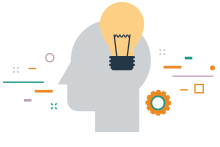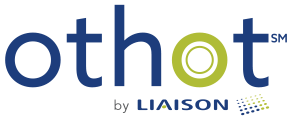The Importance of Data-Driven Decisions in Higher Ed

Andy Hannah
“A renewed commitment by higher education’s leaders to the use of analytics can help colleges and universities advance institutional goals, improve quality and efficiency, strengthen student outcomes, and enhance teaching, learning, and advising.”
So, what is “data-driven decision making”? What are the benefits? And how can you apply it at your institution?
What is Data-Driven Decision Making?
It is the process of modeling and analyzing data to find patterns and insights and using those insights to make decisions.
This approach doesn’t rely on gut, intuition, your perception of facts, or observation. However, it is not meant to minimize human involvement in decision making. On the contrary, it allows the decision maker to focus on the decision that will optimize the outcome they desire.
Decisions supported by data are more objective than decisions made using your gut or your intuition because they aim to remove certain bias from the process. They can be benchmarked and show progress towards metrics-based goals.
What are the Benefits of Data-Driven Decision Making?
1. Make more confident decisions
It’s not surprising that many people use gut feeling to make decisions. According to several studies, more than 50 percent of people rely on intuition, even when presented with data that says otherwise.
Decisions made without data are suboptimal because we, as human beings, think we understand what’s happening. However, there are limits to the human brain, including bias and our inability to process data in the same way a model could process it.
Data is logical and concrete. When you have data to support your decisions, you can confirm your instinct and be more confident. Discussions are guided by facts rather than what feels right, and your suggestions have more integrity with internal stakeholders.
2. Be more proactive
Reactive decisions involve quick or immediate decisions based on something that has happened.
With data and analytics, you can make proactive decisions because issues and risks are identified before they become problems. You can respond before it is too late to pivot and avoid costly mistakes and fighting fires.
Being proactive also allows you to be strategic and focus on how to impact the future. That prescriptive view means that you can allocate resources and focus on outcomes you want to happen as opposed to fighting fires.
3. Optimize Resources and Save Money
A wrong decision can be costly or prevent you from meeting your goals. When you have data to make decisions, you can determine how to optimize resource allocation.
Data and advanced analytics reveal patterns and trends that could become problems if they are not addressed immediately. With that level of actionable intelligence, you can allocate resources where they are needed most.
4. Speed up the decision-making process
The drive to be data-driven has caused many universities to improve data collection and storage. Even more important is the initiative to improve access to this data – regardless of who “owns” it – so they can make decisions that enhance collaboration and synchronization.
Decisions can be made more quickly when data does not exist in siloes. That efficiency leads to improved productivity because all at the institution are using the data they need to make decisions.
How can your institution use data and analytics to make decisions?
1. The best source for high-quality prospective students
A solid prospect list can be the difference between meeting your goals and falling short. How can data help you determine the best sources for potential students?
At Othot, we worked with a college to identify what sources provided “high-quality leads.” The college, through our data-science-driven platform, discovered the reasons why large numbers of purchased names did not matriculate through the admission funnel (apply – enroll). Then, the college used that information to reallocate funds to sources that provide leads that will matriculate.
2. The geomarkets you need to recruit from
Do you know where your best prospects are located?
Your data can identify the geomarkets where your best prospects can be found and which individuals in those markets are most likely to enroll (and thus where you focus).
We collaborated with a college to help them identify the geomarkets with prospects most likely to enroll at their institution. From the school’s historical data, we found their top geomarkets. The college cross-referenced the geomarket list with their marketing strategy and refined a campaign with targeted messages to specific geomarkets.
3. The most effective recruitment events
A good invite list is critical to a successful event. But how can you develop a list that will yield results?
A university hosts an event that historically yields a lot of students. Given the success, they wanted to increase attendance at the events but were limited by budget and resources. By analyzing historical and current prospect data, decile rankings were created for each student based on their stage in the enrollment cycle and likelihood to enroll score.
Using that intelligence, the university created an invitation list that ONLY included students who would be positively impacted by attending the event. Their recruiters used the list to prioritize their personal outreach to prospective students: the results – a 30% increase in attendance at events.
These are just some examples of how colleges can use data to make decisions.
Here are a few other examples from the Othot blog:
Othot and Arizona State University: Optimizing Recruitment Strategy with Platform Insight
New Jersey Institute of Technology Attracts New Jersey’s Best and Brightest Using Analytics
Colleges, ‘We Urge You to Make Data-Driven Decisions’
The Association for Institutional Research, Educause, and NACAC said in their joint statement,“... take advantage of the power of data to make the decisions and take the actions that just may save higher education. Really.”
And we couldn’t agree more—our Chief Technology Officer John Abbatico said in his recent blog post, “The goal is to better equip your team to make decisions to accomplish the mission.”
Data is an important asset to higher ed institutions, and it can be used to answer questions, make decisions, and anticipate trends. That asset will help and support your institution now and as you plan for the future and the associated uncertainties that lie ahead, e.g., demographic changes, the status of COVID-19, and NACAC policy changes.
As the joint statement articulates: “TICK-TOCK, TICK-TOCK – The Time to Act is Now.” We support data-driven decision making at many institutions right now, and we can support you and your institution.
What are your near-term and strategic challenges? Contact us at othotteam@othot.com to schedule a discussion.

Andy Hannah



